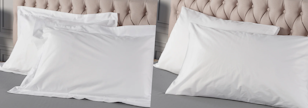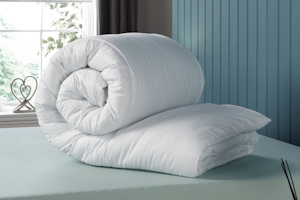
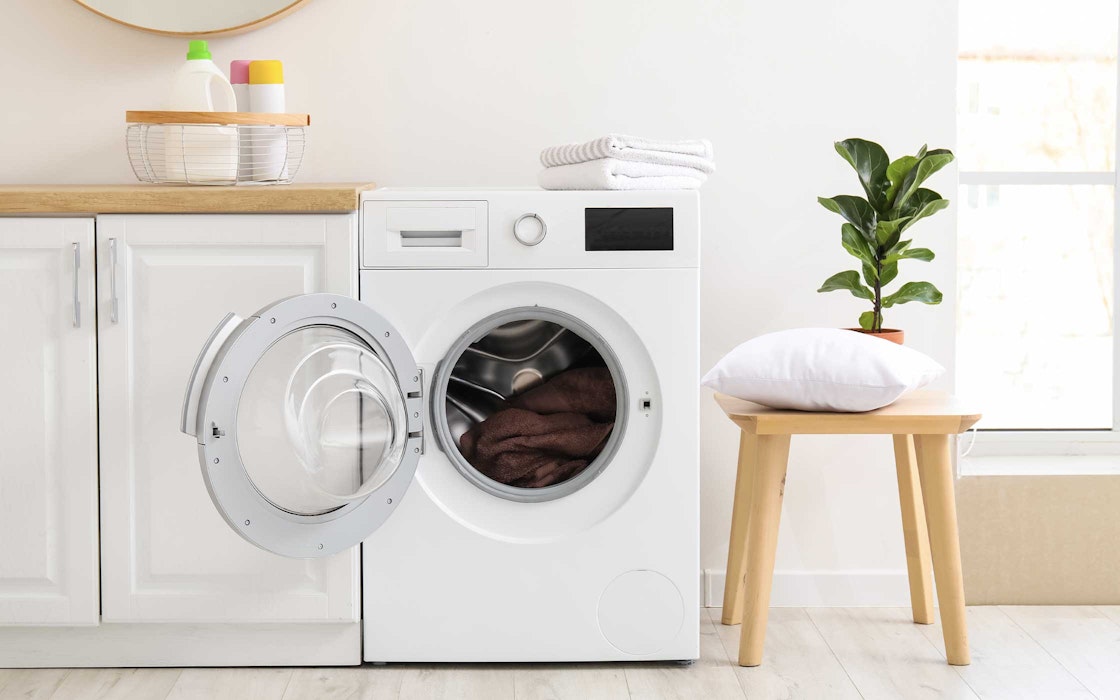
How To Wash a Mattress Protector & How Often
13 Sep 2023
A mattress protector is a crucial investment for keeping your bed clean and free of allergens, bacteria and dust mites. It also helps extend the life of your mattress by shielding it from spills and stains. However, just like any other bedding item, it needs regular cleaning to maintain its effectiveness and ensure a hygienic sleep environment.
Washing a mattress protector not only maintains its protective properties but also contributes to better sleep quality by keeping allergens and bacteria at bay. Knowing how to properly clean the protector and the recommended frequency of washing will help you keep your bedding fresh and comfortable for the long term. Different types of mattress protectors may require specific care, so it's essential to follow the manufacturer's guidelines and precautions to avoid damage.
Key Takeaways
- Regularly washing a mattress protector is essential for maintaining hygiene and protection.
- The recommended frequency for washing a mattress protector is every two months.
- Different mattress protector types may require specific care and instructions to ensure their longevity.
Understanding the Importance of Washing Mattress Protectors
A mattress protector serves a crucial role in preserving the longevity and cleanliness of your mattress. It acts as a barrier against dirt, dust, sweat, allergens, spillages, and pests such as bedbugs. As a result, it is vital to maintain the protector by washing it periodically. This ensures that the protector continues to function as intended and enhances the hygiene of your sleeping environment.
Mattress protectors come in a variety of styles and materials, which may require different care instructions. Some can be machine washed, while others require gentle hand-washing. To correctly wash a mattress protector, follow these general steps:
- Unzip and remove the protector from the mattress
- Gently dab and spot clean the dirty area with a mild detergent
- Carefully hand-wash the top part of the cover, if applicable
- Air dry the protector to avoid shrinkage caused by heat
- Wait until it is fully dry before putting it back on your bed
Besides maintaining its functionality, washing your mattress protector also helps to extend its lifespan. Generally, the lifespan of a mattress protector is around two years if well cared-for. However, the frequency of washing depends on personal preferences and specific factors.
It is advisable to wash your mattress protector every two to three months under normal circumstances. However, if you experience allergies or have a tendency to sweat more during sleep, you may want to wash it more frequently. A general rule of thumb is to wash the protector whenever you change your bed sheets or notice signs of dirt and stains.
In conclusion, understanding the importance of washing mattress protectors is essential for the health and hygiene of your sleeping environment. Regular washing and proper care will ensure the protector remains effective in safeguarding your mattress and promoting a comfortable sleep experience.
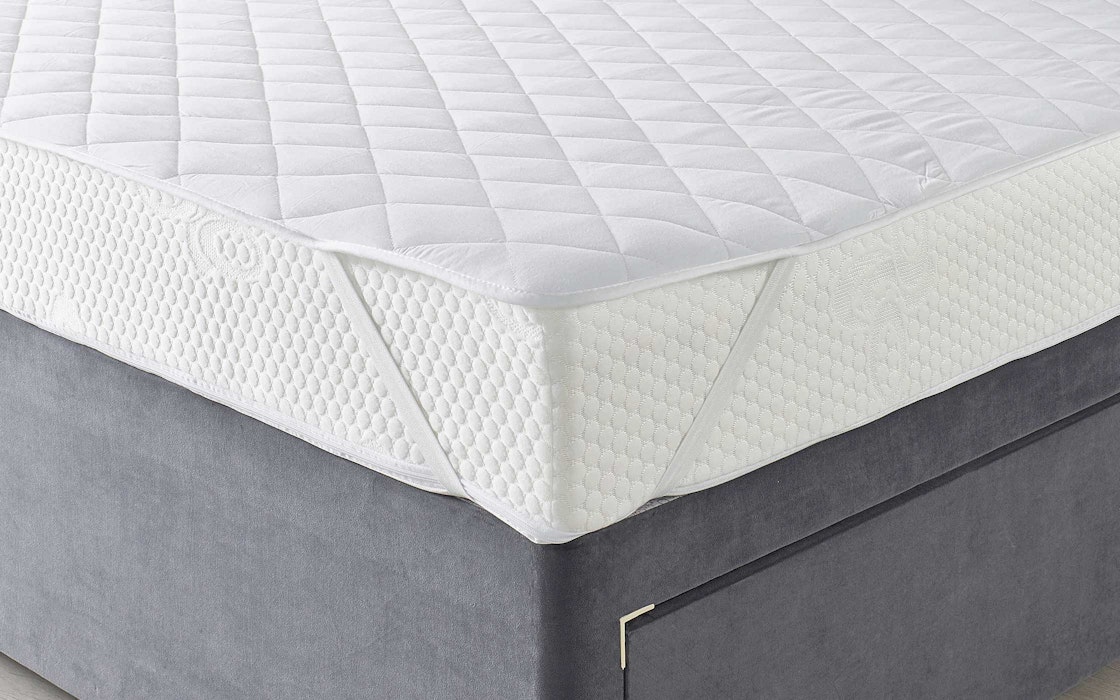
Frequency of Washing Mattress Protectors
Washing a mattress protector is an essential part of maintaining good hygiene in the bedroom. The frequency at which a mattress protector should be cleaned primarily depends on the level of use and any specific needs or requirements. Ensuring a clean environment can support a healthy sleeping routine and allow for restful nights.
Generally, it is recommended to wash a mattress protector every two months. This is because, unlike bed sheets, mattress protectors are not in direct contact with the skin, and therefore, do not require as frequent washing. By washing the mattress protector every two months, one can maintain hygienic upkeep and minimise wear on the protector.
However, there may be times when washing the mattress protector more frequently is necessary. For instance, if you tend to sweat heavily during the night or suffer from allergies, you may need to wash your mattress protector more often, such as once a month. Additionally, if any spills or stains occur, it is important to clean the mattress protector promptly.
To wash a mattress protector, simply remove it from the mattress, and follow the care instructions provided by the manufacturer. Typically, mattress protectors can be washed with a gentle laundry detergent in a washing machine on a delicate cycle. After washing, air dry the protector to avoid any shrinkage from heat exposure. Ensure the mattress protector is fully dry before placing it back on the bed, as dampness can lead to mould and mildew.
In conclusion, maintaining a clean mattress protector is essential for a hygienic and comfortable sleeping environment. By washing your mattress protector at recommended intervals and promptly addressing any stains or spills, you can keep your mattress protected and enjoy a healthy night's sleep.
Items Needed to Wash a Mattress Protector
Cleaning Essentials
To effectively wash a mattress protector, you'll need the following:
- Laundry detergent: Choose a gentle, eco-friendly detergent that's designed for delicate fabrics.
- Enzymatic cleaner: This type of cleaner is great for removing protein-based stains like blood and sweat.
- Soft nylon brush: A gentle brush helps remove excess dirt, debris, and stains from the mattress protector.
- Washing machine: Ensure your mattress protector is machine washable beforehand, as indicated by a cup filled with water symbol on the label (avoid washing waterproof protectors with a vinyl layer, unless specified by the manufacturer).
Storage Essentials
After washing your mattress protector, it's essential to store it properly. Make sure you have:
- Dryer or clothesline: Dry the mattress protector in a tumble dryer on a low setting or air-dry outdoors, ensuring the protector is thoroughly dried to prevent mould and mildew growth.
- Paper or cloth towels: If you opt for air-drying, lay out towels under the mattress protector to absorb excess moisture.
- Wool dryer balls: Add these to the dryer to speed up the drying process and help reduce static.
- A clean, dry place for storage: Once your mattress protector is completely dry, store it in a cool, dry area to avoid damage and keep it fresh.
Steps to Wash a Mattress Protector Manually
Preparation
Before starting the washing process, check the care label on the mattress protector for any specific cleaning instructions. Remove any visible debris, such as hair, lint, or crumbs, from the protector. If there are any stains, pre-treat them with a gentle stain remover or mild detergent. Be sure to check if your mattress protector is suitable for hand washing, as some materials, like waterproof liners, may require specific care.
Cleaning
To clean a mattress protector manually, fill a bathtub or large sink with lukewarm water. Add a small amount of mild detergent, swishing the water around to fully dissolve the detergent. Place the mattress protector in the water, ensuring it is fully submerged. Gently agitate the protector with your hands, focusing on any soiled areas or stains.
Allow the mattress protector to soak for 15-30 minutes, periodically agitating the water to ensure a thorough cleaning. After soaking, carefully drain the soapy water and refill the tub or sink with clean water. Rinse the protector thoroughly, gently squeezing the material to remove any detergent residue. Repeat the rinsing process until the water runs clear and no suds are present.
Drying
Once the mattress protector has been properly rinsed, gently squeeze out any excess water without wringing the material, which can cause damage. Spread the protector out on a clean, dry towel and roll it up, pressing firmly to help wick away moisture. Unroll the towel and remove the mattress protector, which should now be damp but not saturated.
Hang the mattress protector to air dry, ideally outdoors in the sun for a natural sanitising effect and quicker drying time. Alternatively, it can be hung indoors in a well-ventilated area. Ensure the mattress protector is fully dry before placing it back on the bed to prevent mould and mildew growth.
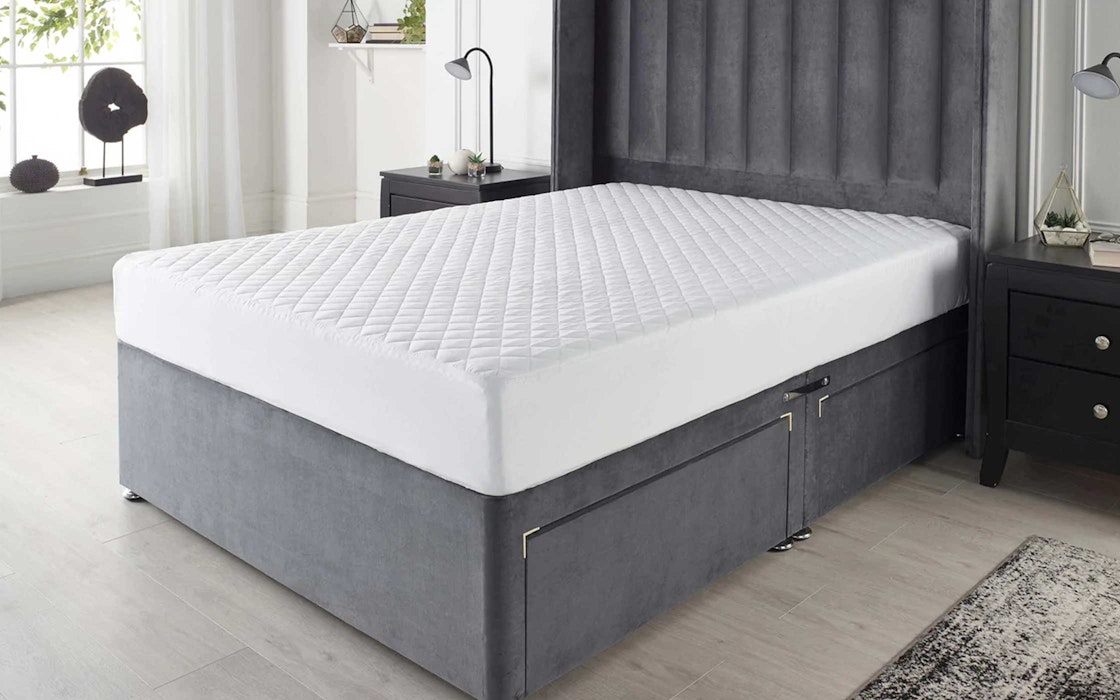
Washing Mattress Protector Using Washing Machine
Preparation
Before washing your mattress protector, first, check the care label for any specific laundering instructions. Remove the protector from the mattress and unzip it if necessary. Pre-treat any stains by gently dabbing with a mild detergent. This helps to loosen the stain and make it easier to remove during the washing process.
Washing Cycle Selection
For machine washing, choose a gentle cycle with cold water to prevent damage to the protector's fabric and any waterproof lining. Use a mild, eco-friendly detergent, avoiding bleach or fabric softeners, as these can reduce the protector's effectiveness. If available, select a slow or no-spin setting to minimise potential damage to the protector. Ensure that the load is balanced by washing the protector together with other items such as towels or linens.
Drying
Once the washing cycle is complete, remove the mattress protector from the washing machine and gently shake it to get rid of excess water. To air-dry the protector, drape it flat across a clothesline or drying rack, avoiding direct sunlight or heat sources, as intense heat can cause shrinkage or damage to the waterproof layer. If you prefer to use a tumble dryer, choose a low heat setting and, as an added precaution, add a few clean, dry towels to help absorb moisture and reduce the risk of damage to the protector. Finally, ensure that the mattress protector is completely dry before putting it back on your bed.
Please keep in mind that the manufacturer's recommendations may vary; always consult the care label for specific instructions related to your mattress protector.
Special Care for Different Types of Mattress Protectors
Cotton Mattress Protectors
Cotton mattress protectors are known for their breathability and softness. To maintain these qualities, it is important to wash them properly. Typically, cotton protectors can be machine-washed on a gentle cycle using cold or warm water. Avoid using harsh detergents or bleach, as these can damage the fibres. It is best to use a mild detergent and wash with like-coloured items. Line drying is recommended to prevent shrinkage. However, if tumble drying is necessary, use a low heat setting.
Polyester Mattress Protectors
Polyester mattress protectors are durable and often more affordable than their cotton counterparts. When washing, use a gentle cycle with cold or warm water. Avoid using hot water as it can cause shrinkage or damage to the waterproof layer, if present. A mild detergent is suitable for these protectors, and it is advised to avoid fabric softeners or bleach. It is possible to tumble dry polyester mattress protectors on a low heat setting. Alternatively, air-dry them away from direct sunlight to minimise wear and tear.
Vinyl Mattress Protectors
Vinyl mattress protectors offer strong resistance against liquids, making them a popular choice for those looking for maximum protection. However, they require special care due to their material composition. It is not recommended to machine-wash vinyl protectors. Instead, opt for spot cleaning using a damp cloth and mild detergent. Wipe down the entire protector with a clean, damp cloth afterward to remove any residue. Allow the protector to air-dry completely before placing it back on the mattress. Regular proper care will help prolong the life of your vinyl mattress protector and ensure optimal performance.
Maintaining the Longevity of Mattress Protectors
Taking proper care of your mattress protector is crucial in maintaining its effectiveness and prolonging its lifespan. Typically, mattress protectors can last for around two years if well cared for. Let's go through the essential steps of washing and maintaining the longevity of your mattress protector.
Before washing the mattress protector, it's essential to unzip and/or remove it from the mattress. Gently dab and spot clean the dirty areas with a mild detergent. In some cases, it's recommended to carefully hand-wash the top part of the cover to prevent any damage. When drying the mattress protector, opt for air drying to avoid any shrinkage caused by heat exposure. Always ensure it's fully dry before putting it back on the bed to prevent mould or mildew.
The frequency of washing a mattress protector plays a significant role in maintaining its longevity. It is generally advised to wash your mattress protector every two to four months, or more frequently if an individual has allergies, asthma, or other respiratory conditions.
Additionally, drying the mattress protector using a dryer, clothesline, or a fan is vital in maintaining its quality. When using a dryer, consider adding wool dryer balls (or tennis balls as an alternative) to ensure proper air circulation during the drying process, resulting in a fully dried protector. Sun-drying the protector using a clothesline is also a good option for a thorough drying process.
Remember, different mattress protectors come in varying styles; some are simple cloth pads, while others feature waterproof or allergen-resistant properties. Therefore, always consult the manufacturer's label or instructions to ensure proper care and avoid any damage.
By following these steps and regularly washing your mattress protector, you can extend its lifespan and maintain the cleanliness and comfort of your bed for a good night's rest.



